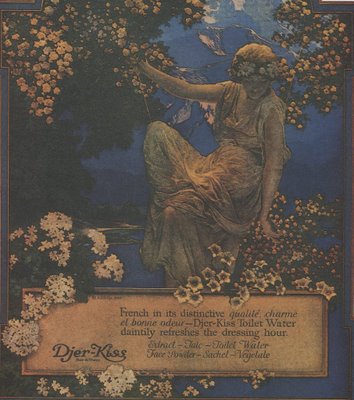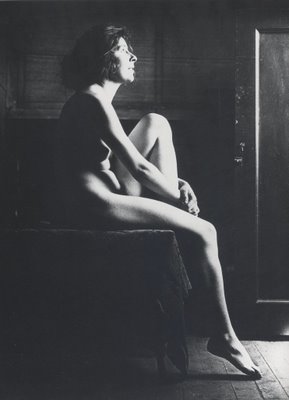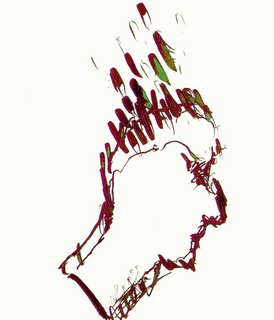impressions on Dani Lima's performance «Estratégia no 1: entre» at the Alkantara FestivalHow close is too close? Say we're alone, just me, the spectator, and a performer. Say she holds my hand. Say she speaks gently behind my ear. Say she walks me through her world. Say she makes me share who I am. Is this too close? Is it too close to be a
performance? Too close to be
good? Too close
for what? To keep the distance? To judge?
Is it too close if I
let her? Of course, at first, I resist, feeling manipulated, cheated, as if I were the one making a performance for the performer. But it's not the case. My participation is only necessary to make me feel there is actually
something between us. A relation. A shared experience. A picture. A recorded sound, a discovered paper or cell phone. A broken tooth.
entre is a performance. It is a performance in that it is a meeting of two people. One of them knows more than the other. One of them is a guide. The other is the guest. S-he walks through this ever-unexpected space. Accompanied. Walking
into the one that guides.
entre comes as close to an encounter as one gets. You touch, but above all - you are touched. I'm glad they replaced the original title, which was
Please, Choose. It is not so much about chosing, as it is about entering. Or about
being chosen, about being touched. You are manipulated, laid on the ground, put into corners, on a chair, in a closet. You are being manipulated into believing there is an actual world. This
is the actual world. And there is proof: this is the perfomer's real photo. This was really her grandmother. This was her real love story. This is her
real smile in reaction to your answer.This, here, is a real living space you will visit. With real people saying hello, as I listen to some beautiful, melancoly music on the earphones (I chose the walk to be accompanied by music). Melancoly. The feeling accompanies me, haunts me, doesn't let go. As if I were visiting some other life, some potential life... Yes, memories of a potential life. With it's potential distances, gestures, smiles and beings. One being, that is. One person. That somehow evades me, that has a schedule, a hidden agenda. That
is a performer, after all. But what do I care, as long as there is something else to discover. As long as I am being
enchanted, as a spectator should always be. Does this mean I'm passive? I suppose that depends on me. Not being exactly of the passive type, I answer, I refuse a thing or two, I inquire. I act
as if.
As if I weren't really a spectator,
as if I actually had a choice,
as if I weren't manipulated into something that will not allow me to judge, to see clearly. And that's fine with her: she answers, reacts, smiles, laughs. She is a person. And that's why
she is in control. And why I trust her. Until, all of a sudden, she's gone.
And that is so eerily alike to how it happens, when a person goes.
Thank You, Dani.
PS.: One thing bothered me. This is an elitist performance. It requires the knowledge and acceptance of a set of conventions. Contrary to what it might seem, anything doesn't go. More than that: you have to accept what happens, or very little actually
will happen. Also, these rules go beyond the most basic, like sitting or respecting the performer. It simply doesn't seem to allow the freedom it claims to give. Especially in the parts that have more to do with the performer herself
executing things. And that is a pity - as if the meeting were sometimes interrupted by fairly formal exercices, things that have more to do with the old-style hermetic performance art style than with the open and magical world that is being open. On the other hand, the festival director Mark Deputter told me in the original version (he saw the premiere in Brasil just a short while ago) there was even more of that. Hopefuly, they will keep cleaning it, focusing on the discovery of the relation with the spectator. And I hope this spectator will some day be me again.







































